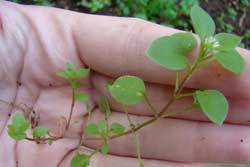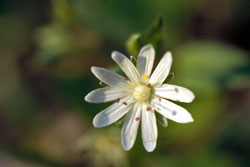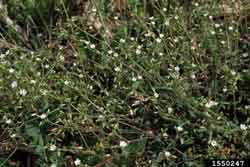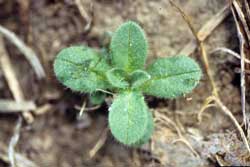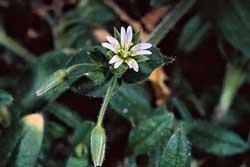Chickweed
Common chickweed is an annual, while mouseear chickweed is a perennial herb. Both are spreading, mat-forming plants, found in lawns, turf, cultivated fields, roadsides, forests and gardens. Common chickweed can be a serious weed in small grains, but it is an important food for wildlife and is used in orchards and vineyards to control erosion and to maintain consistent soil temperatures.
Click on images to view full-size
Common Chickweed—Stellaria media
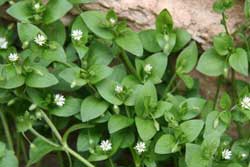
Creeping stems root at the nodes. Lower leaves are on long petioles, while upper leaves are without petioles.>
Mouseear Chickweed—Cerastium vulgatum, Cerastium fontanum
Identification and Control Information
- Common Chickweed Fact Sheet with Description and Control Options (PDF) —Penn State Cooperative Extension
- Common Chickweed Fact Sheet with Description and Control Options (PDF) —United States Department of Agriculture
- Mouse-ear Chickweed Fact Sheet with Description and Control Options (PDF) —Penn State Cooperative Extension
More Information
- Weeds and Your Garden (PDF) —New York State IPM Program and Cornell Cooperative Extension
- Weed Management in the Home Garden (PDF) —Iowa State University Extension
[Photos, left to right: Robert Vidéki, Doronicum Kft., Bugwood.org; Rebekah D. Wallace, Bugwood.org; Theodore Webster, USDA Agricultural Research Service, Bugwood.org; Theodore Webster, USDA Agricultural Research Service, Bugwood.org; Theodore Webster, USDA Agricultural Research Service, Bugwood.org; Joseph M. DiTomaso, University of California - Davis, Bugwood.org]
